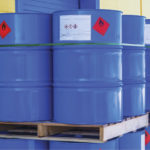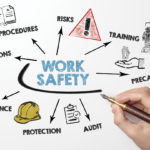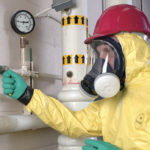Posts by LaceyScanlan
Preventing Fire & Dust Explosions: NFPA 654
“NFPA 654 is a great place to start when taking steps to identify hazards and developing action items designed to reduce risk within a facility handling explosible or combustible materials. There are NFPA codes specific to an industry, but NFPA 654 covers all other processes where combustible material is present.” Fauske & Associates, LLC., 1-877-328-7531,…
Read MoreHazard Training: Safety Data Must Be 24/7
By: Maureen Paraventi, Chief Editor, Workplace Material Handling & Safety It’s not enough to have a safety data sheet (SDS) for each hazardous chemical in your workplace—one that describes the physical, health and environmental health hazards of the substance and provides information about how it should be safely handled and stored. Employers must make sure…
Read MoreThe Amazing Hazard Awareness Advisor
By: Edward Stern, Contributor Overview The Amazing Hazard Awareness Advisor (webapps.dol.gov/elaws/oshahaz.htm) is a very bold title. I would not say it, if it were not true. The official name, OSHA Hazard Awareness Advisor, does not reveal its power. Imagine if I could arrange for a panel of occupational safety and health (OSH) professionals and doctors,…
Read MoreANSI 105/EN 388 Standards for Hand Protection Cut Resistance
Important to Know: Two global standards are used to evaluate the protection levels of work gloves: the ANSI/ISEA 105 (U.S.) and EN 388 (EU). EN 388 is also commonly cited in other parts of the world (i.e., Canada, AUS/NZ and South America). A cut is usually considered to be a wound caused by a sharp…
Read MoreIndustrial Hygiene and Job Planning During Turnarounds
By: Doug Niemtschk, CIH, CSP, Contributor I graduated with a master’s degree in industrial hygiene in 1997. My first job out of school was working for a small consulting firm doing industrial hygiene monitoring at a turnaround in the Houston area. It was in the dead of summer, and the heat was unbearable, but I…
Read MoreThe Dos and Don’ts of Using Air-Sampling Pumps
Best practice advice to protect your workforce from exposure to hazardous substances It is estimated that every 30 seconds, somewhere in the world, one worker dies as a result of exposure to toxic chemicals, pesticides, radiation and other hazardous substances1. The effects of exposure can develop quickly or take years to develop, leaving workers vulnerable…
Read MoreGood Communication is Critical to Confined Space Safety
By: Bob Henderson, Contributor Confined space entry is a team effort, and good communication is central to confined space safety. Since 1993, OSHA 1910.146, “Permit-Required Confined Spaces,” has made this clear. Entry supervisors, attendants, entrants, rescue team members, employers, contractors and management all need to understand their duties and follow the rules. What is the…
Read MoreHow to Use Gas Detection Data to Your Advantage
By: Dave Wagner, Contributor If you use gas detectors on your worksite but only look at the data they collect after an incident, you may be missing out on critical insights about your work environment; behaviors of those wearing the monitors; and the health and performance of the gas detectors themselves. Here are a few…
Read MoreProtecting Workers from Welding Hazards
By: Barbara Nessinger, Editor-in-Chief According to the American Welding Society, an estimated 50% U.S. gross national product is affected by welding. Anything made of metal, no matter how big or small, can be welded. Welding is the most common method used to join metal parts in large structures and equipment, due to its strength. Soldering…
Read MoreBreathe Easy: A 10-Step Respiratory Protection Training Plan
By: Mark Stromme, Contributor Employees depend on a respirator to keep them safe and healthy when working in a hazardous atmosphere. Make sure they understand how to safely use the equipment. Overview Before you can require employees to wear respirators, the Occupational Safety and Health Administration (OSHA) requires you to take steps to prevent the…
Read More












